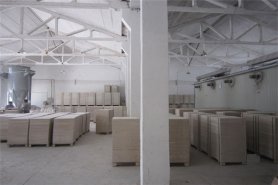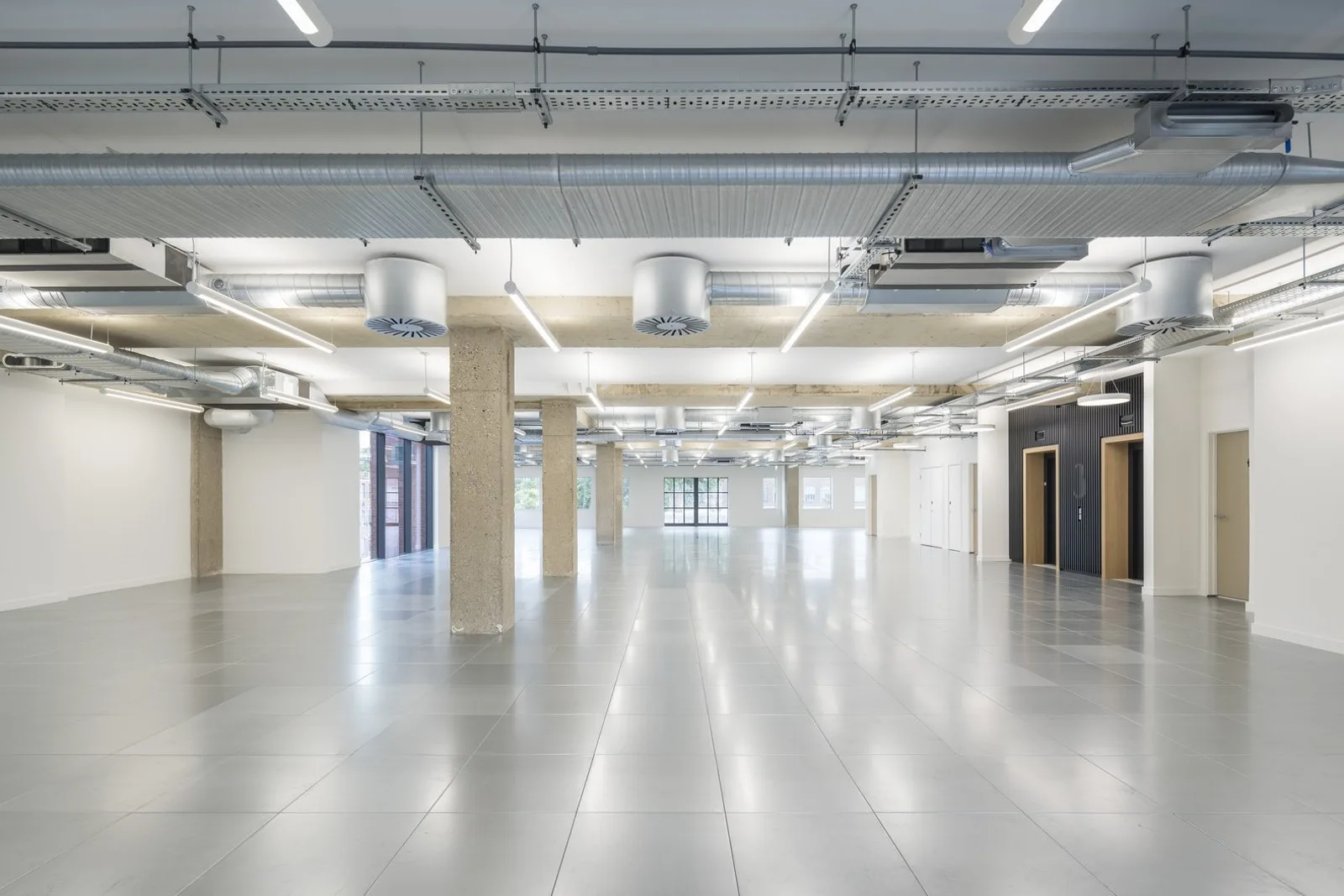In China, the concept of calcium sulfate raised floor take domination. Market understands few about calcium sulfate raised floor. Due to the advantages of calcium sulfate raised floor (such as recyclability, excellent fire performance, excellent acoustic performance, etc.), more and more people choose calcium sulfate raised floor. Then more factories produce calcium sulfate raised floor. However, most calcium sulfate raised floor produced in China are not real and pure. How to distinguish good quality calcium sulfate boards?
The report of calcium sulfate board factories in China
Here we are talking about calcium sulfate board, not finished calcium sulfate raised floor. Only with a good-quality calcium sulfate board can the following production process make sense.
The calcium sulfate floor is derived from Knauf in Germany. In addition to the Chinese factories, companies that produce calcium sulfate board in the world now include “Knauf” and “Lindner”. In China, there are more than 20 manufacturers of calcium sulfate board now, but more than 80% have been established in the last four years. The popularity of calcium sulfate raised floor has driven the development of manufacturers. However, few manufacturers produce high-quality products.
Calcium sulfate board has high requirements for the quality and proportion of raw materials (mainly natural gypsum and fiber), alone with the manufacturing process. We tested the calcium sulfate board on the market and found that calcium sulfate content in most boards are below 50%. The lowest is even less than 20%, which is far below the 85% standard. Such boards are absolutely not recyclable.

Why fake calcium sulfate board
Calcium sulfate raised floor sourced from Europe. Compared with European countries, China has low recycling costs, and the industry and national standards are also very different. Therefore, the contractors will not actually consider the final recycling link of the users, they are promoting with these advantages. There is a large market for non-recyclable calcium sulfate raised floor with cheap price. When users choose calcium sulfate raised floor, they are really chasing for the advantages, not just the concept. So how can we tell those bad quality calcium sulfate raised floor?
How to judge the good quality calcium sulfate board
1.Material test
The most accurate method is to send the calcium sulfate board to the laboratory for the active ingredients inside. However, this method is costly and has a long cycle. So is there a more effective way?
2. Density measurement of calcium sulfate panel
Most of the boards on the market have added cheaper alternatives, such as cement. This way not only reduces costs, but also avoids some complicated production processes. However, the first downside is that the density is greatly increased. The standard calcium sulfate board density is around 1500 kg/m³ (Knauf’s board density is 1200 kg/m³, 1500 kg/m³, 1200 kg/m³ standard is more as a wallboard). Now the density of most boards on the market exceeds this number, reaching more than 1650 kg/m³. The higher weight does not improve the performance of the floor itself, and it increases the overall load of the buildings.
3. Deformation measurement
The main raw materials for calcium sulfate board are natural gypsum and fiber, which gives the board a certain degree of flexibility and elasticity. The board with low purity will be very hard. We compare our calcium sulfate board with others on the market. The test is based on 600*600*30 mm board. And the results are as follows:
| Companies | TitanFlor | Factory A | B | C |
D |
|
Weight |
16.3 kg |
17.9 kg | 18.5 kg | 17.4 kg |
18.8 kg |
|
Density |
1509 kg/m³ | 1657 kg/m³ | 1713 kg/m³ | 1611 kg/m³ |
1741 kg/m³ |
|
Concentrated Load(2.5 mm Deformation) |
4100 N |
4350 N | None (Break before reaching 2.5 mm) | 3660 N |
None (Break before reaching 2.5 mm) |
|
Ultimate Load |
6350 N | 4570 N | 5240 N | 3920 N |
4620 N |
|
Ultimate Deformation |
3.7 mm | 2.6 mm | 2.1 mm | 2.8 mm |
1.8 mm |
Since the physical properties of boards are too hard, some manufacturers’ boards will break before reaching 2.5 mm deformation (the test standard of CISCA, EN). The lower ultimate deformation is, the lower impact load is. It is very dangerous in practical applications. If the floor’s ultimate deformation is small, the floor will break easily. And it will easily cause an accident.
Most calcium sulfate board are stuck with galvanized steel sheets underneath to increase the ultimate deformation. If the following is not attached with any covering, or only aluminum foil is attached, then such calcium sulfate boards can not be used.

4. Judge the quality with color
The color of the calcium sulfate board using pure natural gypsum and fiber is close to white. Therefore, if other materials are added inside, the color will become cloudy, and the more impurities, the more turbid the color. However, some manufacturers now add whitening agents to change the color of the board. So it is not so effective to distinguish if the quality of the floor is good by color.
Hope that more and more Chinese manufacturers can focus on the product itself, instead of following the market.





